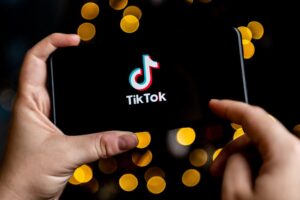
TikTok is in the process of updating the way that it uses to pay content creators. The site predicts that producers can make more than 20 times as much money as they were previously earning on TikTok if they take advantage of its new Creativity Program, which offers incentives to users who create films that are longer than one minute.
This is excellent news for TikTokers who engage in more conversation, but for other creators, the reimbursements from TikTok have never been all that beneficial to begin with.
TikTok’s creators in the United States, the United Kingdom, France, and Germany will be moved over to the Creativity Program on December 16, rather than its current Creator Fund. This change will take effect immediately. Despite having titles that are very similar to one another, the two programs are not interchangeable. Under the terms of the previous $1 billion Creator Fund, creators who qualified for payouts would get amounts that were proportional to the number of times their videos were viewed. However, the platform quickly surpassed the $1 billion budget, which meant that creators could publish a video that had millions of views but only get paid approximately the same amount as it would cost to purchase a cup of coffee. If you think $1 billion is a lot of money, consider that YouTube artists were paid $30 billion in just three years because to the company’s policy of sharing advertising revenue.
TikTok decided to implement the Creativity Program after realizing that payouts from the Creator Fund are quite insignificant. The most significant distinction between the two approaches is that the Creativity Program only enables users to commercialize content that is more than one minute in length.
Amanda Golka, the brains behind Swell Entertainment, told TechCrunch that the company’s success had a “positive impact” on her wallet despite the fact that she tends to talk a lot. YouTube is Golka’s principal outlet, and there she publishes long-form commentary videos about various aspects of culture and the media. On the other hand, she has observed that on TikTok, some content creators who typically prefer shorter pieces have been attempting to prolong their films with varying degrees of success.
“I’ve noticed that it’s led to more filler in storytimes,” she added, referring to TikToks that are formatted like storytimes and in which people tell stories from their own lives. It is similar to an event that took happened on YouTube a few years ago, and it is this event that brings back memories for her. At the time, video creators became aware that YouTube’s algorithm favored longer content, and as a result, they began producing films that were longer. Although there are some of us who would gladly watch a video that is an hour long discussing the most insane things that have happened on “Glee,” not all creators are able to make the leap to lengthier videos without losing their ability to keep viewers captivated.
Lindsey Lee Lugrin, CEO of FYPM, which bills itself as the “Glassdoor for influencers,” conducted a survey to get feedback from her Instagram followers over recent changes to TikTok’s monetization options. She claimed to TechCrunch that the results of her poll showed that some content creators with longer films reported earning 10 times more money through the Creativity Program than they did through the Creator Fund. Because they had given up so long ago on the idea of making money directly through TikTok, several people found the prospect of even trying out the new service to be discouraging. Some people thought that the qualifications to participate in the program were excessively stringent. In order to qualify for the program, a TikToker needed to be at least 18 years old, have at least 10,000 followers, and have at least 100,000 views in the last 30 days.
Another major drawback of the Creativity Program is that content creators can only sell their videos if they use music that is available without a license fee. TikTok trends frequently center on pieces of music that are protected by copyright, such as throwbacks to old Kate Bush albums or Olivia Rodrigo albums. Therefore, this may be restrictive for some content creators; nonetheless, it is likely that TikTok is taking this action because the site generates more revenue from videos that do not include licensed music.
“We developed the Creativity Program based on the learnings and feedback from the Creator Fund,” said Maria Jung, a spokesperson for TikTok, in an email to Afriupdate. “We’ll continue listening and learning from our community as we explore new features and enhance existing ones to further enrich the TikTok experience,” Jung added.
As more content creators sign up for TikTok’s Creativity Program, it will become easier to determine whether or not the company lives up to its claims that it offers opportunity for creators to earn more money. TikTok creators aren’t making a lot of money off of the site to begin with, so it’s unlikely that they’ll experience significant drops in their revenue as a result of these changes. On the other hand, this bodes well for them regardless of the outcome of the situation.
Follow our socials Whatsapp, Facebook, Instagram, Twitter, and Google News.








![Burna Boy’s sister, Nissi purchases 2024 Porsche Taycan [Video] 8 Burna Boy’s sister, Nissi purchases 2024 Porsche Taycan [Video]](https://www.afriupdate.com/wp-content/uploads/2023/11/nissi-1140x570-1-75x75.jpg)